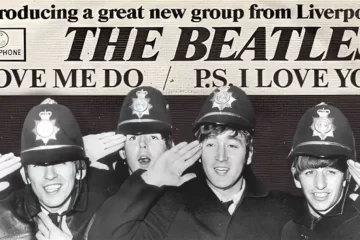The end of the 1960s brought with it the end of The Beatles. Creative disputes, interpersonal issues, and the death of their manager, Brian Epstein, had all begun to weigh heavy on the band. As the decade drew to a close, it became clear that these problems were insurmountable, that the Beatles couldn’t carry on working in the way they once had, so they called it a day. Paul McCartney announced his departure in April 1970, and the Fab Four were no longer.
Little more than a month later, the Beatles unveiled their final, full-length studio recording, the aptly titled Let It Be. The record gave us the iconic title track, a placating piece from McCartney that seemed like a final ode both to his bandmates and to fans, as well as some beautiful final offerings in ‘Across the Universe’ and ‘The Long and Winding Road’. It was a fitting end, but it wasn’t initially intended to be their final release.
In fact, Let It Be was recorded before Abbey Road, as George Martin once explained in a 1993 interview. “Abbey Road was the last album that was made,” he remembered, “But I never thought we’d get there. Because prior to Abbey Road, we had recorded an album called Let It Be.” Despite the calming nature of the album’s title, Martin admitted that the recording process for Let It Be was a difficult one.
This, perhaps, stemmed from the ambitious idea that spawned the album. Rather than creating another straightforward studio record, Martin and the Beatles initially set out to do something slightly different. They wanted Let It Be to be a live album, but not in the traditional sense. “We thought, ‘Let’s make a live album,’” Martin remembered, “We’d never done this. For the first time, let’s make a live album of original music before an audience.”
The goal with Let It Be was to record a selection of new songs in front of a crowd, live in the studio, but it proved to be too ambitious logistically. Martin explained that they couldn’t locate a studio in the country that was big enough to accommodate the audience they required, and also acknowledged that the band were keen to record at Saville Row.
Although the idea didn’t entirely come to fruition, the Beatles, particularly John Lennon, were still keen to create something “honest”. This led the band to record countless takes, hoping to nail each song live without requiring any editing. “It got very tedious,” Martin remembered. Despite the band’s commitment to this idea of creating something closer to a live album, the end result wasn’t quite what they wanted.
In hopes of salvaging the recordings, Martin had an idea. “The album, in the end, because of this stricture, was not a perfect album,” he explained, “So the only way I could think of making something out of it was to make it like a documentary.” As a result, the recording features little mistakes and moments from recording sessions, little laughs and applause in the studio.
They hadn’t quite executed the concept that had set out to, but they had offered a more stripped-back look at the Beatles in their final years. Let It Be wasn’t just an album, it was an invite to join the band in the studio.



